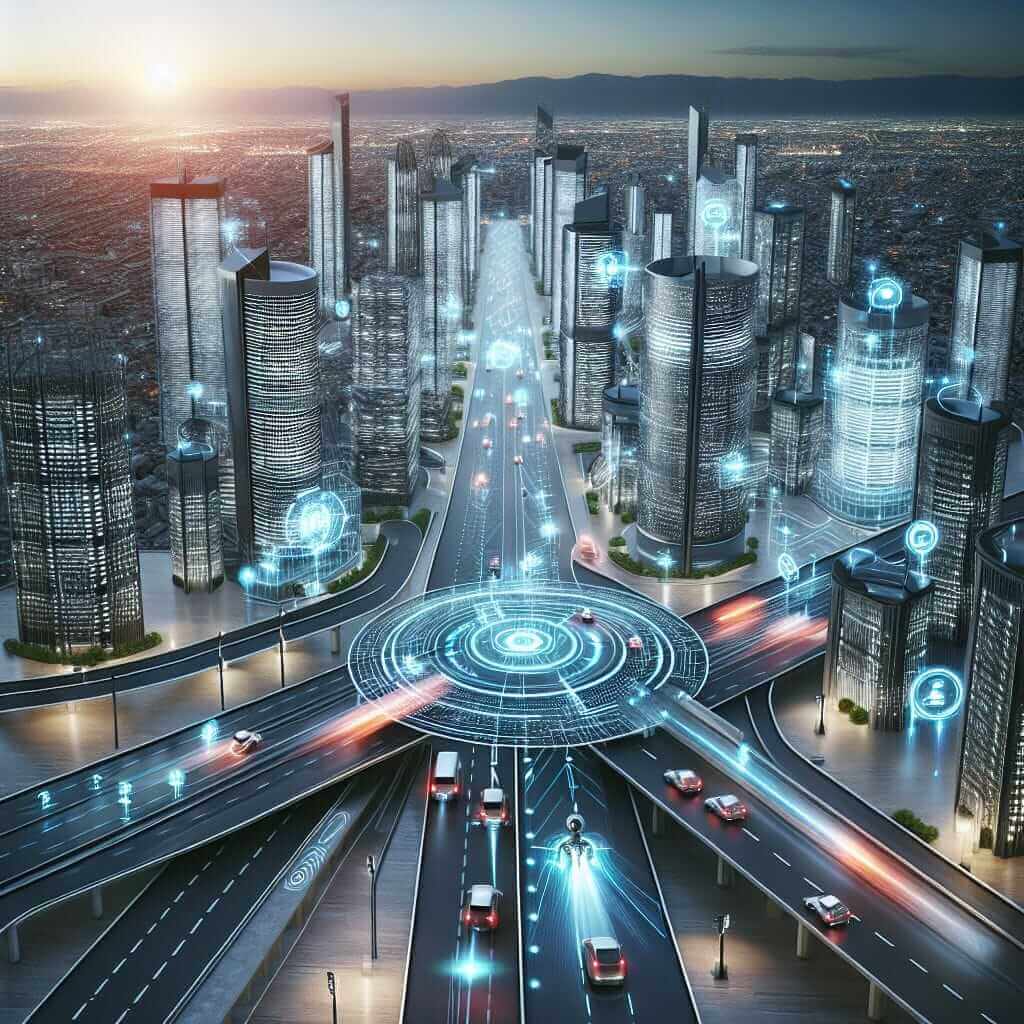Reading is one of the four sections in the IELTS exam, assessing your ability to understand and infer meaning from written texts. Topics in the IELTS Reading section often revolve around current global issues and technological advancements. One such topic that has gained significant traction over the years is the transformation brought about by Artificial Intelligence (AI) in various industries, including transportation. Given the rapid advancements and the pervasive influence of AI, this topic may very well appear in future IELTS exams.
In today’s modern world, AI has profoundly impacted the transportation industry, making it more efficient, safer, and smarter. This article dives deep into how AI is reshaping the transportation sector and provides a comprehensive IELTS Reading practice test on the topic.
How AI is Transforming the Transportation Industry
Reading Passage (Medium Text)
AI, or Artificial Intelligence, is radically changing the face of the transportation industry. From autonomous vehicles to intelligent traffic management systems, AI is fueling a revolution that promises enhanced efficiency, safety, and user experience. This passage explores various ways AI is transforming transportation.
Autonomous vehicles are perhaps the most well-known application of AI in transportation. Companies like Tesla, Waymo, and Uber are at the forefront of developing self-driving cars that can navigate without human intervention. These vehicles use AI algorithms to process vast amounts of data collected by sensors and cameras to make real-time driving decisions. This not only reduces human error but also improves road safety.
Intelligent traffic management systems are another significant contribution of AI. These systems utilize AI to analyze traffic patterns and adjust traffic signals in real-time, thereby reducing congestion and improving the flow of vehicles. Cities like Los Angeles and Singapore have already implemented such systems with notable success.
In addition to road transport, AI is having a substantial impact on air and maritime transport as well. AI-powered predictive maintenance systems are now commonplace in aviation, allowing airlines to identify potential equipment failures before they occur, thereby reducing downtime and enhancing safety. Similarly, ports are using AI for optimizing cargo loading and unloading, as well as for automating other logistical processes.
AI is also revolutionizing ride-sharing services. Algorithms determine the most efficient routes, predict demand, and even match passengers with similar destinations to optimize ride-sharing services. This not only reduces operational costs for companies but also ensures a better experience for the users.
Despite these advancements, the integration of AI in transportation is not without challenges. Ethical concerns, data privacy issues, and the potential for job losses are some of the significant hurdles that need to be addressed. However, with continued advancements and the right regulatory frameworks, AI has the potential to completely revolutionize the transport sector.
Questions
Multiple Choice (Choose the correct option)
-
What is one of the most well-known applications of AI in transportation?
A. Intelligent traffic management systems
B. Autonomous vehicles
C. Predictive maintenance in aviation
D. Ride-sharing services -
How do autonomous vehicles make real-time driving decisions?
A. By following pre-set routes
B. By processing data collected by sensors and cameras
C. By manual human direction
D. By communicating with other vehicles
True/False/Not Given
- Cities like Los Angeles and Singapore have failed to implement intelligent traffic management systems.
- AI-powered predictive maintenance systems can identify potential equipment failures in aviation before they occur.
Matching Headings
5-8. Match each paragraph with the appropriate heading:
a. Impact on air and maritime transport
b. Autonomous vehicles
c. Ethical concerns
d. AI in ride-sharing services
Answer Keys
- B Autonomous vehicles are one of the most well-known applications of AI in transportation.
- B Autonomous vehicles use AI algorithms to process data collected by sensors and cameras to make real-time driving decisions.
- False Cities like Los Angeles and Singapore have implemented intelligent traffic management systems with notable success.
- True AI-powered predictive maintenance systems can identify potential equipment failures in aviation before they occur.
- b Autonomous vehicles.
- a Impact on air and maritime transport.
- d AI in ride-sharing services.
- c Ethical concerns.
Common Mistakes to Avoid
- Not Understanding the Passage Context: Students often lose marks because they fail to grasp the overall context of the passage. Read attentively to understand the main ideas.
- Misinterpreting Questions: Pay close attention to what the question is asking. Misinterpretation can lead to incorrect answers.
- Overlooking Key Details: Small details often contain crucial information. Make sure to read the passage thoroughly.
Advanced Vocabulary and Grammar
-
Vocabulary:
- Autonomous (/ɔːˈtɒnəməs/): adjective. Capable of operating independently without human control.
- Predictive (/prɪˈdɪktɪv/): adjective. Relating to predicting an event or result.
- Optimization (/ˌɒptɪmaɪˈzeɪʃən/): noun. The action of making the best or most effective use of a resource or situation.
-
Grammar:
- Relative Clauses: “These vehicles that can navigate without human intervention use AI algorithms.”
- Usage: Introducing additional information about a noun without changing the main idea.
- Present Perfect Tense: “Cities have implemented such systems.”
- Usage: Describing actions that happened at an unspecified time before now.
- Relative Clauses: “These vehicles that can navigate without human intervention use AI algorithms.”
Conclusion and Tips for High Reading Scores
To achieve high scores in the IELTS Reading section, consistent practice is key. Focus on understanding passages rather than just skimming through them. Practice various question types regularly and time yourself to get used to the exam conditions. Lastly, build a strong vocabulary and be familiar with different grammatical structures to enhance your comprehension skills.

For those preparing for the IELTS, understanding how AI is transforming the transportation industry offers insight into a relevant and contemporary issue that could very well feature in your exam. Happy studying and best of luck!